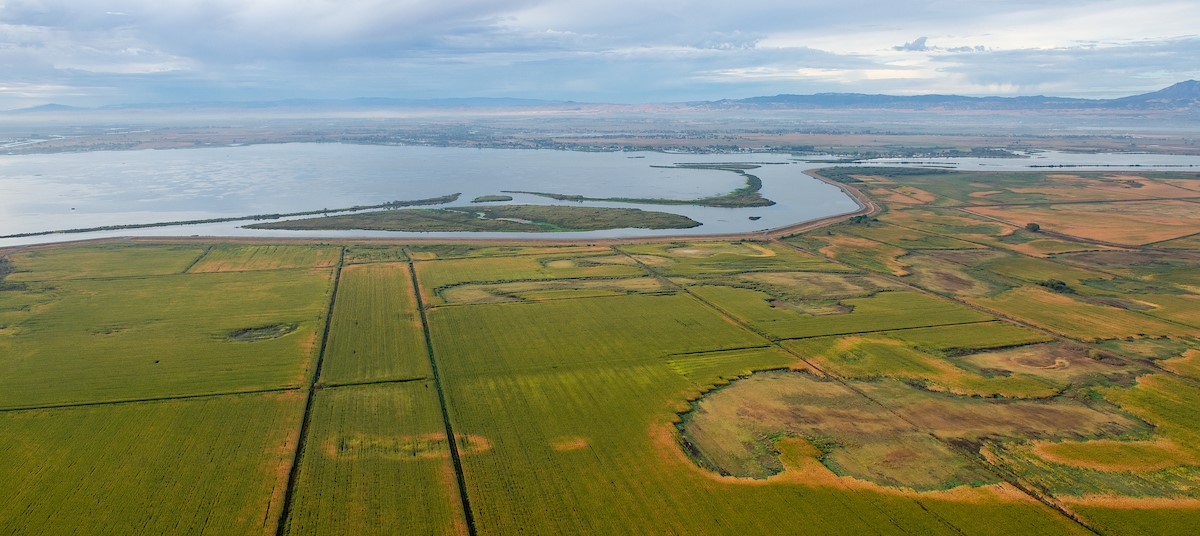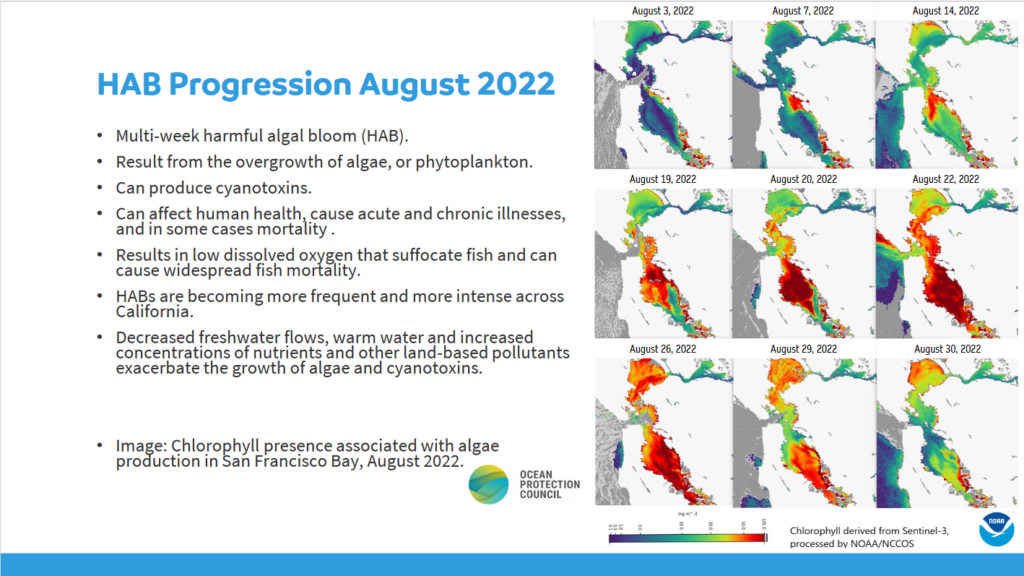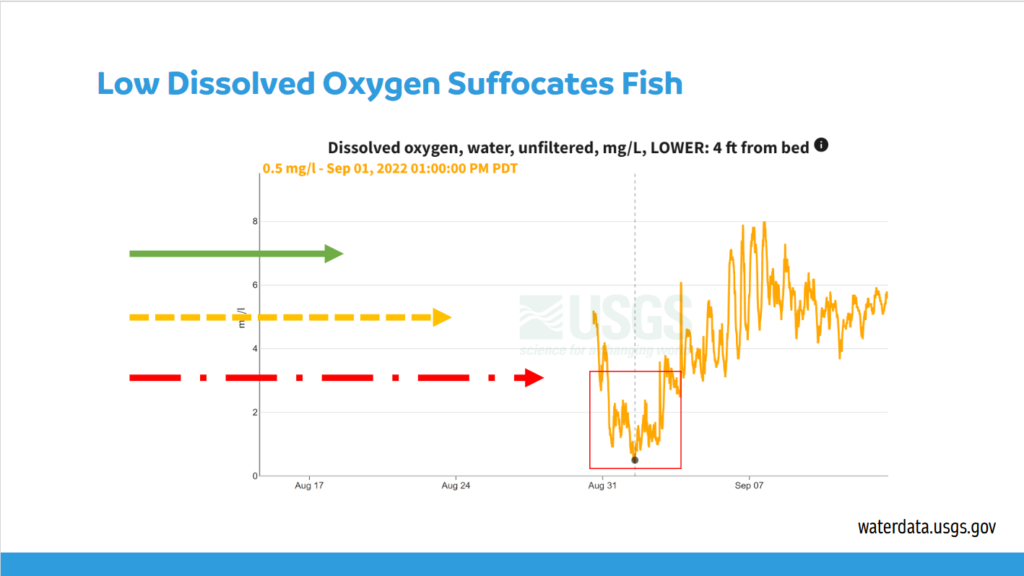How habitats used by chinook salmon and Sacramento splittail would be impacted by climate change, harmful algal blooms in San Francisco Bay and the Delta, and upcoming workshops on Harmful Algal Blooms and Interdisciplinary science and more in this month’s Delta Lead Scientist report from August and September Delta Stewardship Council meetings.
August article spotlight: Climate change
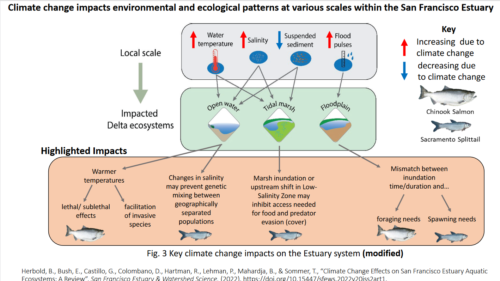 The impacts of climate change are being felt in California, and there is a focus on understanding how climate change will impact human communities to better anticipate responses. The Science Action Agenda also calls for anticipating how climate change will impact listed and managed species within the estuary and specifically how the interacting factors, including temperature, changes in precipitation, and other factors associated with climate change, will drive these populations.
The impacts of climate change are being felt in California, and there is a focus on understanding how climate change will impact human communities to better anticipate responses. The Science Action Agenda also calls for anticipating how climate change will impact listed and managed species within the estuary and specifically how the interacting factors, including temperature, changes in precipitation, and other factors associated with climate change, will drive these populations.
Along those lines, the article Dr. Larsen spotlighted at the August meeting of the Delta Stewardship Council was a synthesis study whose authors include Eva Bush, an environmental scientist at the Delta Stewardship Council, and Denise Colombano, a Delta Science Fellow.
In the study, the researchers reviewed how two representative species within the estuary, the chinook salmon and the Sacramento splittail, are likely to respond to various factors associated with climate change. They considered how the different habitats these two species use are changing and how those habitats might be managed to mitigate climate change effects and enhance the resiliency of these populations.
The two species chosen for the study have two different life history strategies: Chinook salmon migrate to the ocean to complete part of their lifecycle before returning to the estuary to spawn, and the Sacramento splittail is found throughout the estuary and is an estuary resident. Researchers looked at open water habitats, tidal marshes, and floodplains and evaluated changes in temperature, salinity, sediment, and flood pulses.
Open water habitat: The main concern for these two species is the warmer temperatures that Chinook salmon are experiencing. Salmon are already close to the temperature threshold for survival, and there are many non-lethal effects in warmer temperatures, such as enhanced susceptibility to predation or toxins.
“So the main management advice that pertains to the open water habitat is that hatchery operations, including trucking of hatchery species around the Delta, are really going to be essential for maximizing the resiliency of Chinook salmon to temperature changes in the open water habitat,” said Dr. Larsen.
Tidal marsh habitat: Dr. Larsen acknowledged that we don’t really understand how Chinook salmon use tidal marshes, but splittail inhabit the marshes for periods of time to seek food and refuge from predators. Also, the splittail require low salinity. The low salinity zone within the Delta during typical water years coincides with tidal marshes in the North Delta. However, during years when inflow is low, the low salinity zone is pushed further north, further upstream into the Delta away from tidal marshes; when that happens, conditions are not as suitable for Sacramento splittail.
“In terms of management implications, this underscores the importance of managing salinity and, in particular, the location of that low salinity zone within the Delta,” said Dr. Larsen. “It also argues for the importance of marsh restoration, as those marshes that are likely to be resilient to sea level rise – in other words, where they have space to migrate upslope –might coincide with the low salinity zone in the future.”
Floodplain habitat: Floodplain habitat is critical for both Chinook salmon and Sacramento splittail. The concern is that with climate change, floodplains are likely to be inundated earlier in the year and for shorter periods, so there may be a mismatch in timing between when these species seek to use the floodplain and when the floodplains are actually inundated.
In conclusion … “There are some really important ways that we can enhance the resilience of these species with respect to floodplains, and one is actions like the notching of the Freemont Weir, a project that was just kicked off, that would allow floodplains to be inundated at lower river levels,” said Dr. Larsen. “The other type of management action is just broadening access to floodplains. So the lookout Slough Project is a great example of a project that would really expand floodplain availability to these species. So we’re on the right track with these two recent projects.”
Delta Lead Scientist report: Harmful algal blooms (HABs)
In September, Dr. Larsen focused her report on harmful algal blooms (HABs) as the previous month, one of the main stories in the news media was the large red tide event that occurred in San Francisco Bay that resulted in a lot of fish mortality. Dr. Larsen noted that the red tide event that occurred in the Bay is a different type of harmful algal bloom than the type that occurs in the Delta. Unlike the event in the San Francisco Bay, the organisms that comprise HABs in the Delta are cyanobacteria, most commonly microcystis, and they produce a neurotoxin called microcystin.
In contrast, the red tide event in San Francisco Bay was caused by heterosigma, a different class of microorganism with flagella that can move up and down in the water column. While they’re known to be toxic to fish, their toxin has not yet been isolated, and the mechanism of the toxicity is poorly understood. But they drive dissolved oxygen in the water column to very low levels, which is what caused the fish kill in the Bay.
While red tide events have occurred infrequently in San Francisco Bay for decades, freshwater cyano HAB events in the Delta are a recent phenomenon, appearing only since 1999, and have been increasing in frequency and extent. Cyano HABs are also poorly understood in tidal systems compared to marine HABs or cyano HABs events in freshwater lakes. So two actions in the 2022-26 Science Action Agenda focus on studying how HABs occur and what can be done to reduce the probability of occurrence and/or lessen their impacts.
Article spotlight: Algae blooms in the Delta
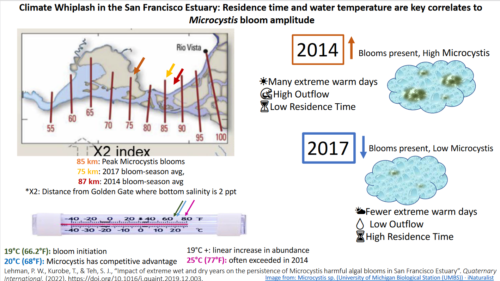 The article spotlight for this month addresses one of those actions in the Science Action Agenda to determine how environmental drivers interact to cause HABs in the Delta. The article, led by Peggy Lehman at the Department of Water Resources, evaluates how temperature and flows interact in the formation of harmful algal blooms.
The article spotlight for this month addresses one of those actions in the Science Action Agenda to determine how environmental drivers interact to cause HABs in the Delta. The article, led by Peggy Lehman at the Department of Water Resources, evaluates how temperature and flows interact in the formation of harmful algal blooms.
It is generally understood that algal blooms tend to develop under warmer temperatures, elevated concentrations of nutrients in the water, and a relatively stagnant or slow-flowing water that enables colonies to form, but how those factors interact and how they quantitatively relate to bloom characteristics, as well as what triggers particular blooms, remain poorly understood.
In this study, Lehman and the team took advantage of a weather whiplash event, the transition between the extreme drought of 2012 to 2016, and the extreme wet year in 2017 to evaluate how the extreme contrast in flows might explain differences in the abundance of microcystis across those years. They sampled water for microcystis throughout the extremely dry 2014 and extremely wet 2017 while also tracking flows and different water quality constituents, including nutrients and temperature.
“Given that in another wet year, 2011, there was virtually no microcystis present, the team hypothesized that cyano HABs are reversible with high flows,” said Dr. Larsen. “However, this was not what they saw. Instead, microcystis remained present through the wet 2017; though the bloom was smaller, initiated later had a shorter duration and produced fewer toxins than in dry 2014 when the Delta experienced a bloom that was 13 to 76% larger than in all previous years.”
“The team concluded that once Microcystis is established during dry years, seed material is retained and blooms will likely persist even during subsequent very wet years, provided that water temperature and other water quality factors are favorable.”
The team also used statistical modeling to relate the data they had collected on microcystis concentration in the water to the other abiotic data they collected and found that just two variables could explain most of the variability in microcystis concentration during those bloom events. One of those variables is X2, which is the distance from the Golden Gate into the Delta at which salinity is 2 parts per 1000; it is a measure of how far into the Delta the salinity encroaches.
“During wet years, flows are effective at pushing this salinity transition back towards the Golden Gate,” said Dr. Larsen. “But during dry years when X2 lengthens as the salinity front moves into the Delta, Lehman and colleagues found that X2 in combination with water temperature were predictive of the abundance of cyano HABs organisms, with warmer temperatures and higher X2 representative have lower outflows associated with more microcystis. This work suggests that management actions that decrease X2 or salinity encroachment may be associated with lower probabilities of HABs.”
Dr. Larsen noted that while the data used to form their model were limited, their statistical model may also provide a quantitative way to estimate possible impacts of altered salinity as a proxy for flows on HABs. This could benefit the products of the upcoming Delta Salinity Management Workshop.
Councilmember Don Nottoli asked how this information could potentially be used in managing the Delta.
“There are a few different ways I think this is useful,” said Dr. Larsen. “It is one part of a larger complex story, and I should point out that the data collected only come from two years, so they might not be representative of the types of HABs events that occur regularly in the Delta. But that said, I think it could be useful in helping us produce a back-of-the-envelope estimate of how salinity management alternatives that we’re looking at in this salinity management workshop could play out for the HABs story. So it’s one of the things that could help us estimate the broader trade-offs of our flow management actions.”
“The other thing this is relevant to is the Harmful Algal Blooms workshop in November. That workshop aims to develop a comprehensive and well-coordinated monitoring strategy for harmful algal blooms. And this report, I think, helps identify some of the factors that these events are most sensitive to and which factors should be incorporated into a monitoring program in a deliberate way.”
Dr. Larsen noted that the statistical model developed in this study is not predictive of whether an algal bloom will occur at a specific time and place. Still, it will be useful for developing hypotheses about the impacts of proposed management actions that could then be tested. “The Council has been taking a leadership role in coordinating across agencies in support of monitoring that ultimately will support predictive modeling of these harmful algal bloom events, and I expect that will continue to play a role and synthesis of the findings of these emerging studies. So I think this is a really important part of the puzzle.”
Algae bloom in the San Francisco Bay
Next, Pascale Goertler, Senior Environmental Scientist with the Delta Science Program, gave a brief presentation on the recent San Francisco Bay HAB event.
HABs are becoming more frequent and intense across California as decreased freshwater flow, warm water, and increased concentrations of nutrients and other land-based pollutants exacerbate the growth of algae and cyanotoxins.
During August 2022, there was a multi-week HAB event, which resulted in low dissolved oxygen suffocating fish and caused widespread fish mortality. The figures on the slide show the progression of the algal bloom through time, starting at Merritt Lake and extending into the South Bay and San Pablo Bay, increasing in intensity over time.
The low dissolved oxygen resulted in a widespread fish mortality event. The figure shows dissolved oxygen at the Dunbarton Bridge in South San Francisco Bay. The three arrows represent how fish are affected. For a fish, if the dissolved oxygen is around seven milligrams per liter, represented by the green arrow, it’s no problem. However, it becomes stressful for fish at five milligrams per liter, represented by the yellow arrow. Once dissolved oxygen reaches three milligrams per liter, represented by the red arrow, it becomes damaging and can result in mortality.
“We had three or four days of lethal dissolved oxygen levels that dropped down to 2.5 milligrams per liter on September 1, which is a horrible experience if you’re an aquatic species that needs to breathe with your gills,” said Ms. Goertler. “It varies by species and condition, obviously. This is a generalization to give you a sense of what happened.”
She noted that it is doubtful that zero dissolved oxygen could actually be measured, but it was quite low. “I heard anecdotally that clams and invertebrates were also found in large numbers, so it likely killed everything in the water in some places. I read a quote that these events are like wildfires underwater, and I think it’s a good metaphor because just like a fire can pull the oxygen out of the air, so can these HABs decrease the oxygen in the water.”
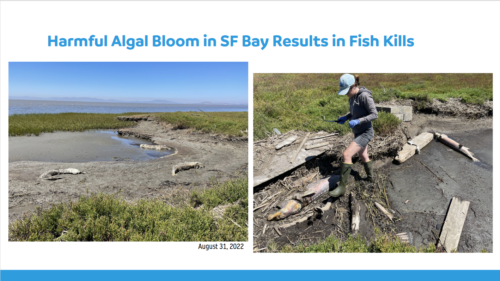 The photo shows the carcasses of white sturgeon found on Mare Island. Sturgeon are migratory fish that can swim very fast. They are long-lived, living possibly up to 100 years. There are two species: white and green sturgeon. The green sturgeon is ESA listed and endemic to the watershed.
The photo shows the carcasses of white sturgeon found on Mare Island. Sturgeon are migratory fish that can swim very fast. They are long-lived, living possibly up to 100 years. There are two species: white and green sturgeon. The green sturgeon is ESA listed and endemic to the watershed.
Scientists are working to quantify the fishkill; DR/MS Gertner is part of a collaboration working to estimate the mortality for sturgeon. They collect fin rays to determine the fish’s age, life history, and species. The effort relies on citizen science, so if you go kayaking or hiking and come across a dead sturgeon, please let them know. An informational flyer is here.
Activities of the Delta Science Program
Harmful algal blooms workshop scheduled for November 8 and 9
The algal bloom event in the San Francisco Bay has reinforced the notion that HABs are an estuary-wide problem, not a Bay-specific or Delta-specific problem. One consideration that has emerged is how nutrients contributed by wastewater treatment plants might have fueled this bloom. Dr. Larsen reminded that what triggered the algal bloom isn’t yet known, but there are questions about the role of nutrients.
The Sacramento Regional Sanitation District recently upgraded its treatment systems to tertiary treatment, removing most nitrogen from its effluent. Most water treatment systems in the Bay stop at secondary treatment, so they still discharge large ammonium loads into the Bay. And there are questions about whether those treatment plants would need to undergo similar upgrading processes at the cost of billions of dollars.
There are also questions about the extent to which the clearing water columns might have contributed to the algal bloom event. The water column is clearing as the hydraulic mining pulse of sediment from the Gold Rush Era diminishes, invasive weeds trap sediment, and invasive clams filter the water.
These questions require coordination and transfer of scientific understanding across the Bay-Delta interface. So the Harmful Algal Bloom Workshop Planning Team is reaching out to researchers who study HABs in the Bay. Breakout discussions will focus on how a HABs monitoring program with the Delta can interact with HABs monitoring in the San Francisco Bay.
Registration for the workshop, scheduled for November 8-9, is now open. It is a hybrid event; folks can attend in person in Sacramento or attend virtually. Here is more information on the workshop. Click here to register to attend in person. Click here to register to attend virtually.
Science for Communities Workshop October 14 and 20
The science for communities workshop is a series hosted by the Delta social science community of practice. It is a two-part workshop scheduled for October 14 and October 20. The workshop aims to integrate social scientists with more disciplinary, biological and physical scientists to address pressing management questions and priorities. It is an action identified in the Science Action Agenda.
On October 14, the workshop will provide training for scientists who might not be familiar with social science disciplines or techniques and highlight how those methods could advance the type of questions that we can address. In addition, case studies will be highlighted to identify how socio-ecological challenges have been researched and addressed elsewhere.
The October 20 workshop will be interactive in which social and natural scientists will be paired to co-develop mock proposals for interdisciplinary research projects to support the Science Action Agenda. The hope is that these mock proposals will lead to actual proposals that could be submitted to the Council’s PSN process or other funding calls.
Both of these events are free and will be held online, with an optional in-person networking event hosted in Sacramento in the late afternoon on October 20. The breakout session for the October 20 workshop will also have an in-person component. More information here. Click here to register for the October 14 workshop. Click here to register for the October 20 workshop.
Planning continues for the Delta Salinity Management Workshop in the spring of 2023
The Delta Salinity Management Workshop series aims to develop a collaborative scenario-based approach to salinity management planning in the face of extended drought and sea level rise. A pilot project will examine a limited set of scenarios and pave the way for highly focused discussions on the knowledge gaps and modeling needs for a more comprehensive trade-off assessment. Modelers at DWR and the consulting agency, RMA, have developed a proposal in coordination with the workshop planning team to define the scope and methods for the pilot project modeling effort. That proposal is now undergoing an external review facilitated by the Delta Science Program and has been presented in other working group meetings.
On August 30, the modeling team met with a working group of participants from Delta water agencies and irrigation districts to seek technical feedback on the proposed demonstration exercise. A second, more general workgroup meeting will be held later this fall. Feedback received in these meetings will be incorporated into revisions of the proposed modeling work and/or the written report that will emerge from the workshop series that discusses the next steps.
The Salinity Management Workshop Planning Team has convened a social science team composed of diverse stakeholders to evaluate the human dimensions of salinity management. The group will contribute to ongoing efforts to develop new models and tools to assess future salinity scenarios that are likely to impact the Delta, as well as explore potential management solutions.
Funding awards for directed science actions
Dr. Larsen said she will begin giving updates on the Delta Science Program’s funding awards for directed actions, which are awards provided outside the competitive PSN cycle. A portion of the budget is set aside for directed actions, which are a key funding mechanism that allows the science program to respond to rapidly developing events or emerging needs in the Delta. Similar to the competitive awards, directed actions go through a rigorous external review process with three reviewers, and only positively reviewed proposals can proceed with contracts.
“Our policy is that all directed actions must be responsive to the Science Action Agenda,” said Dr. Larsen. “They must additionally meet one of the following criteria: One, they must be responsive to steadily developing or rapidly changing conditions; two, responsive to priorities of collaborative groups or workshops; three, advance new techniques or new technology that might still be experimental in nature but potentially have a large payoff; and four, help promote diversity, equity and inclusivity, and Delta science.”
“I’ll note that we do not accept unsolicited proposals for directed actions,” she added.
Currently being considered:
Salinity Management Demonstration Project with a budget of $650,000. The demonstration exercise will simulate how a limited subset of alternative management scenarios, including a drought barrier, wetland restoration, and potential regulatory changes, will impact salinity under future sea level rise and drought conditions. The combination of structural alterations to the Delta and sea level rise will have complex three-dimensional effects in the way that salinity is redistributed through the Delta, so robustly simulating those effects requires large amounts of computational time, which has historically served as a barrier in doing this forward-thinking trade-off analysis.
The work being considered would fund modelers to use artificial intelligence to learn from computationally-expensive, three-dimensional simulations to create a computationally efficient but physically robust shortcut to relate future salinity to Delta inflows. This new computational tool would be made openly available to the community and will enable a wide range of future scenarios for Delta salinity management to be robustly evaluated. It will be implemented for the set of scenarios currently being vetted through a series of technical working groups.
This project is responsive to the Science Action Agenda, Action 6-B, which is to evaluate the impacts and trade-offs of drought management actions on ecological and human communities.
Delta Social Environmental Science Data Integration Project: This integration project with a budget of close to $700,000 is responsive to the challenge that currently, social science data for the Delta resides in disparate locations, it can be difficult to find, sometimes it’s not publicly available, and often it’s not inherently compatible with environmental data. These realities have served as barriers to quantitative projects that would integrate social science with biological and physical science. This directed action would fund a team at the USGS, San Francisco Estuary Institute, and Sacramento State to locate and gather relevant social science data and create a searchable catalog that provides that data in a format compatible with other environmental datasets.
The team will also hold a stakeholder workshop to orient users to this Social Science Data Catalog, solicit feedback, make improvements and identify low-hanging fruit-type projects that could be implemented with this data set. Then they propose to do one of those projects, so this directed action could build off of some of the projects that emerge as priorities from the upcoming Advancing Interdisciplinary Research Workshop.
The work is done in partnership with the social science community of practice and will help implement the Social Science Taskforce Report and the Social Science Integration Team Action Plan. It addresses action 1A of the Science Action Agenda, which is to establish publicly accessible repositories and interactive platforms in support of timely decision-making and collaborative efforts, and action 3B, which is to develop integrated frameworks, data visualization tools, and models of the Delta socio-ecological system.
Effect of Phos-Chek on Chinook salmon and rainbow trout: With a budget of about $600,000, this project would evaluate the impacts of fire retardants on Chinook salmon and rainbow trout. This project emerged from the Interagency Ecological Program’s Contaminants Work Team; it’s also responsive to the severe fire seasons we’re experiencing that is having rapidly-developing knock-on effects.
The project looks at Phos-Chek, a new but widely used fire retardant with poorly understood effects on aquatic life. It evaluates the lethal and sublethal toxicity of Phos-Chek, as well as other fire retardants, on Chinook salmon and rainbow trout with the intent of developing new regulatory standards. This action is in support of science action agenda 5A, which is to identify environmental thresholds and strategies that support species recovery, and also 5d, which is to quantify spatial and temporal hotspots of chemical contaminants and evaluate ecosystem effects.
Refining strategies for applying early detection and rapid response for invasive species: This project with a budget of $66,000 involves a case study involving ribbonweed. For the control of invasive species, prevention of new invasions is considered by far the best defense but having a plan for early detection, and rapid response to new invaders that make it past that first defense is a paramount secondary defense.
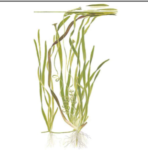
The goal of an Early Detection and Rapid Response (or EDRR) strategy is to eradicate or limit the spread of new species before they proliferate to the extent that they become essentially uncontrollable. The biannual Delta invasive species workshop, held in December 2021, identified the establishment of an EDRR strategy for the Delta as a priority.
This project, which is being led by CSU Long Beach and the Delta Conservancy, will evaluate and test an EDRR framework using ribbonweed, a submersed aquatic weed that recently invaded the Delta, as a case study. It addresses Science Action Agenda action 3E, which is to conduct applied research to inform EDR strategies, and action 5A, which is to identify and test innovative methods for controlling and managing invasive aquatic vegetation.


